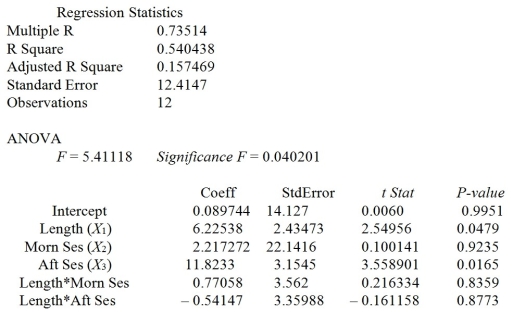TABLE 13-11
A weight-loss clinic wants to use regression analysis to build a model for weight loss of a client (measured in pounds) . Two variables thought to affect weight loss are client's length of time on the weight loss program and time of session. These variables are described below:
Y = Weight loss (in pounds)
X1 = Length of time in weight-loss program (in months)
X2 = 1 if morning session, 0 if not
X3 = 1 if afternoon session, 0 if not (Base level = evening session)
Data for 12 clients on a weight-loss program at the clinic were collected and used to fit the interaction model:
Y = β0 + β1X1 + β2X2 + β3X3 + β4X1X2 + β5X1X3 + ε
Partial output from Microsoft Excel follows:

-Referring to Table 13-11, what null hypothesis would you test to determine whether the slope of the linear relationship between weight loss (Y) and time in the program (X₁) varies according to time of session?
Definitions:
Desired Return
The specific profit that an investor aims to achieve from an investment.
Investment
The allocation of resources, such as time, money, or effort, in something with the expectation of receiving a future return or profit.
Traceable Fixed Expense
Fixed costs that can be directly linked to a specific business center or segment.
Net Operating Income
A company's earnings derived from its regular business operations, excluding income from investments and after expenses have been deducted.
Q1: What type of pay system rewards employees
Q4: Compare Social Security disability benefits with the
Q23: Referring to Table 14-2, what is the
Q24: In a multiple regression model, which of
Q28: Referring to Table 14-8, based on the
Q60: Referring to Table 10-19, using an overall
Q69: Referring to Table 11-12, to test whether
Q74: Referring to Table 14-7, an <img src="https://d2lvgg3v3hfg70.cloudfront.net/TB2694/.jpg"
Q99: Based on the residual plot below, you
Q136: Referring to Table 13-8, the value of